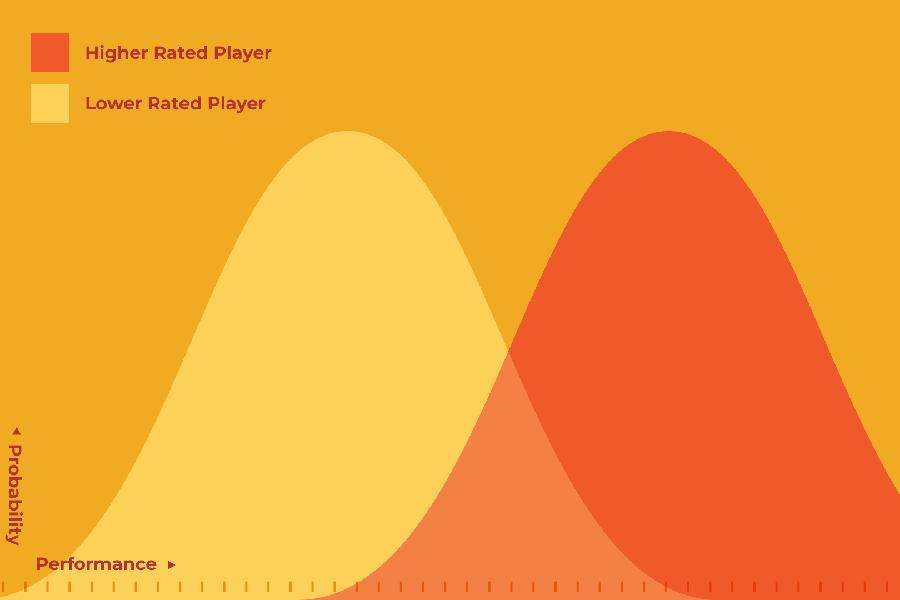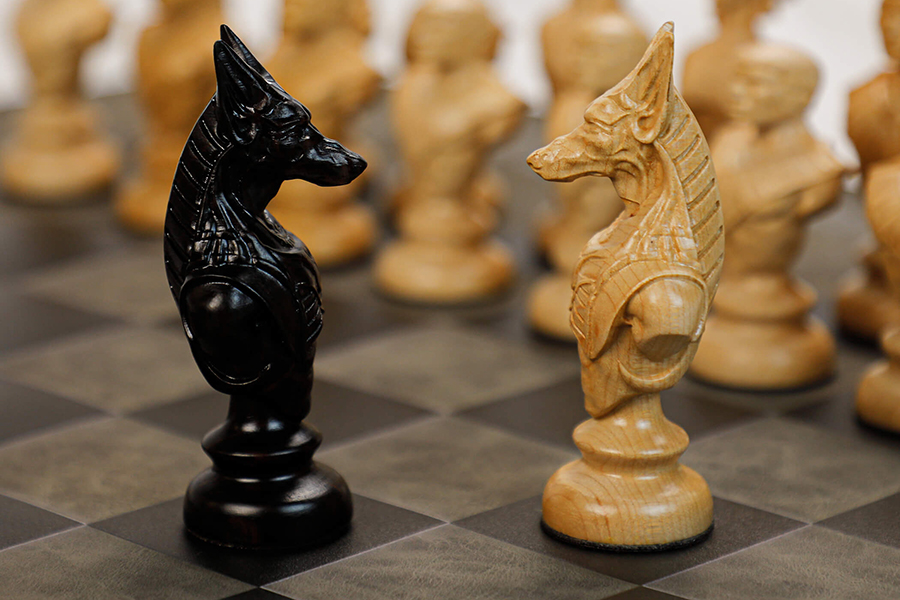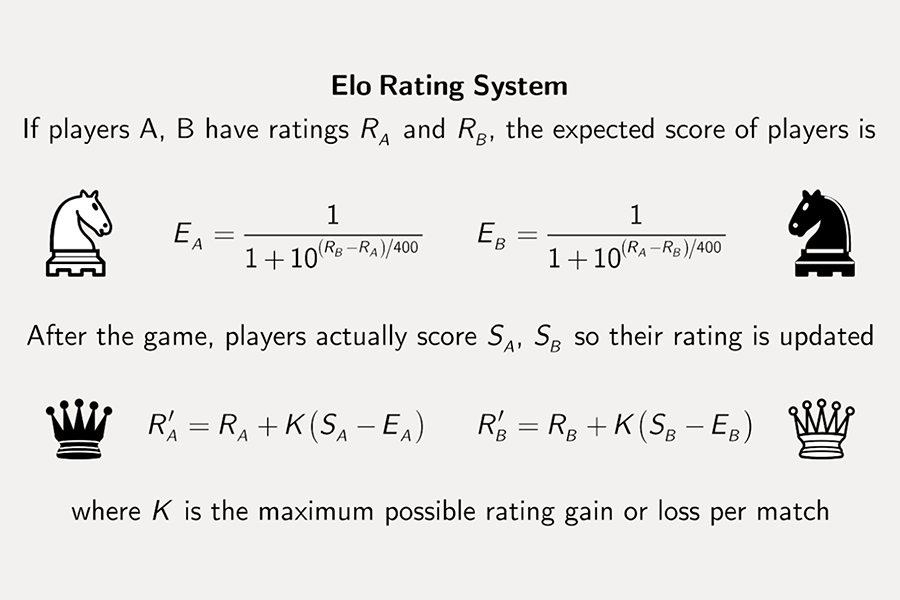No products in the cart.
Chess Rules & Instructions
Elo Rating System – Definition And How It Works In Chess
Table of Contents
What is Elo Rating System?
The Elo rating system is a method of calculating the relative skill levels of players in two-player games such as chess. It is named after its creator, Arpad Elo, a Hungarian-born American physics professor.
Each player is given a numerical rating, which is then modified depending on how each game turns out. Higher-rated players are thought to be stronger and are predicted to win more frequently than lower-rated individuals.
The Elo rating system is also used in other competitive activities, such as sports and online gaming.
Why Is The Elo Rating System Important?
In competitive games and sports including chess, tennis, and football, the Elo rating system is a commonly used method for ranking and rating players. It provides a more realistic depiction of a player’s ability level by taking into consideration the outcomes of previous games and adjusting player ratings appropriately. This makes it simpler to pair up players with comparable skill levels, which raises the game’s overall competitiveness.
Additionally, as it enables them to seed players and design balanced brackets, the Elo rating system is crucial for tournament organizers.
Overall, the Elo rating system plays a significant role in the fairness and competitiveness of many competitive games and sports.
The measurement of the rating of an individual might well be compared with the measurement of the position of a cork bobbing up and down on the surface of agitated water with a yardstick tied to a rope and which is swaying in the wind.
— Arpad Elo, creator of the Elo rating system
How Does The Elo Rating System Work?
Player Category According To Rating
• Grandmasters: Usually 2500 or higher
• International masters: Usually between 2400 and 2500
• FIDE master: Usually between 2300 and 2400
• FIDE candidate master/National Master: usually between 2200 and 2300
• Expert/National Candidate Master: Between 2000 and 2200
• Class A player: Between 1800 and 1999
• Class B player: Between 1600 and 1799
• Class C player: Between 1400 and 1599
• Class D player: Between 1200 and 1399
• Class E Player: Between 1000 and 1199
Players who have a rating of 2700 or higher are informally known as “supergrandmasters.”
Currently, the world record for Elo is 2882 points and is held by a Norwegian chess grandmaster – Magnus Carlsen (April 2014).
ELO Rating Algorithm
If a player wins a game, their rating will increase, and if they lose, their rating will decrease.
The formula for calculating an ELO rating is as follows:
New Rating = Old Rating + K * (Result – Expected Result)
Where:
– New Rating = the player’s updated ELO rating
– Old Rating = the player’s previous ELO rating
– K = the K-factor, which determines how much a player’s rating will change based on the result of a game (higher K-values mean greater fluctuations in rating)
– Result = the actual outcome of the game (1 = win, 0.5 = draw, 0 = loss)
– Expected Result = the probability of the player winning the game, based on their ELO ratings relative to their opponent’s (calculated using the logistic function)
The ELO rating algorithm can be adapted for use in other games, by adjusting the K-factor and expected result calculations to suit the specific rules and conditions of the game in question.
Modifications to Simplify Elo Calculation in Chess
To simplify the calculation, Elo proposed a simple method to estimate the variables in the model (i.e. the real skill of each player). It is relatively easy to calculate from tables the number of matches a player is expected to win (calculated based on a comparison of that player’s rating with his opponent’s) and the number of wins per game. their reality.
From there, the rating of the player who has won more matches than expected will be adjusted up. Conversely, players who win less than the expected number will be adjusted down. Furthermore, that adjustment should be linearly proportional to the number of wins the player has over or under compared to their expected number of games.
In fact, Elo’s simplified assumptions are not necessary at present, since the ways to do the exact calculations according to the formula are not difficult and are widely available. Some, most notably Mark Glickman, have suggested using more sophisticated statistical machinery to estimate similar variables.
On the other hand, the computational simplicity of the Elo system has proven to be one of its best. With the aid of a pocket computer, a savvy chess player would be able to calculate their next rank on their own even though it has not been officially announced, which helps to promote the perception that the rating is a matter of fact. equal.



